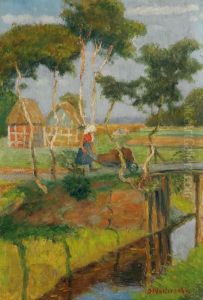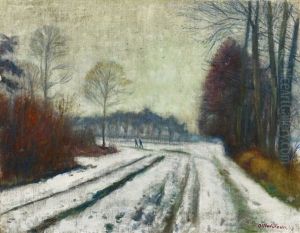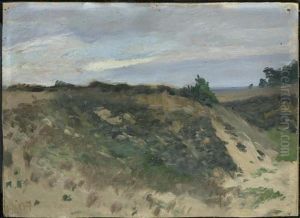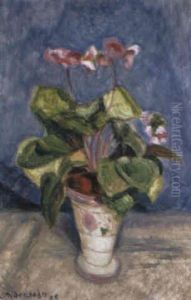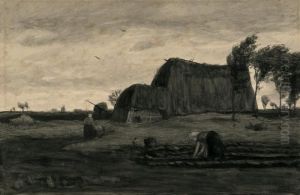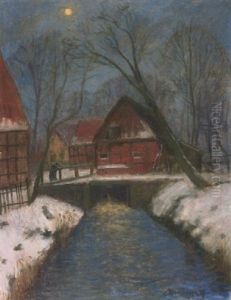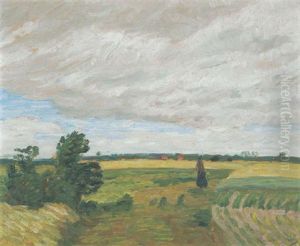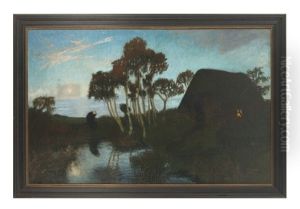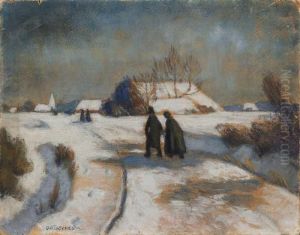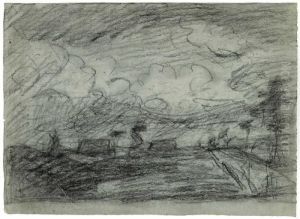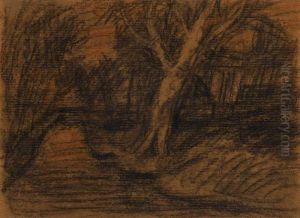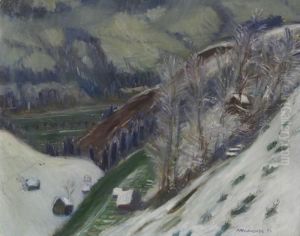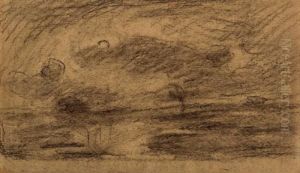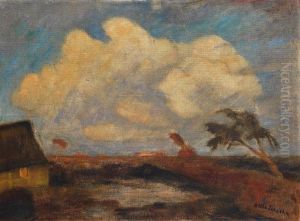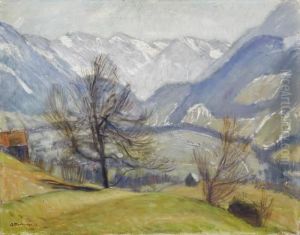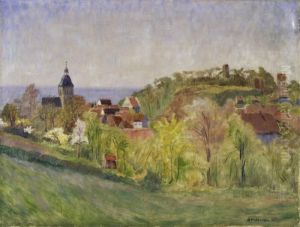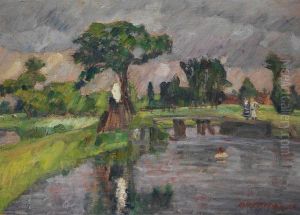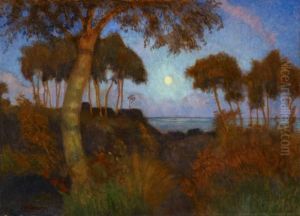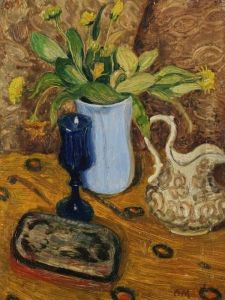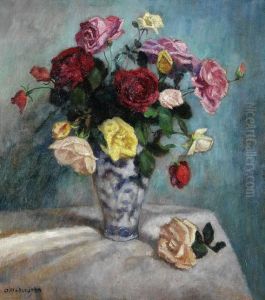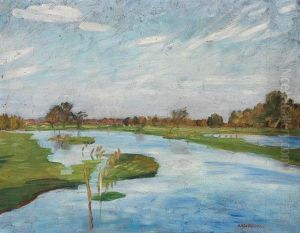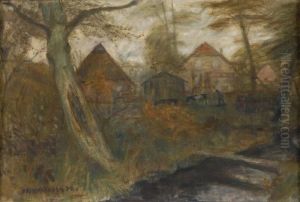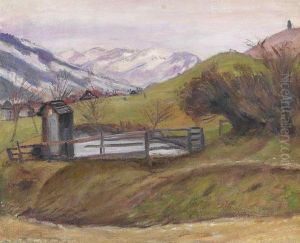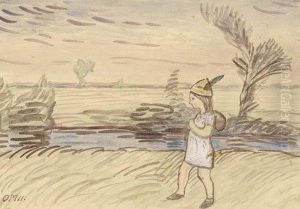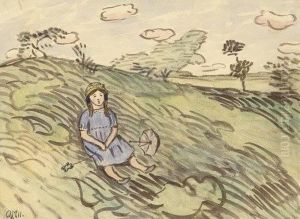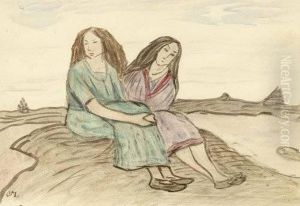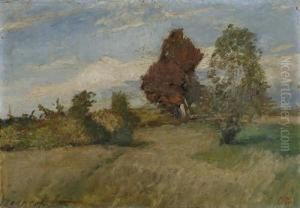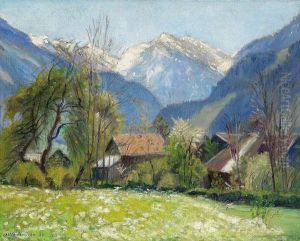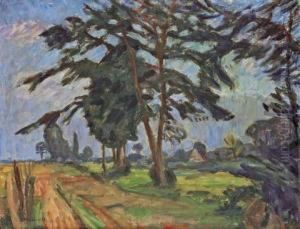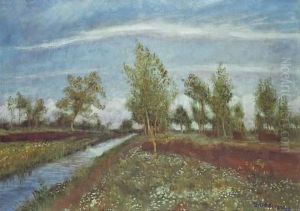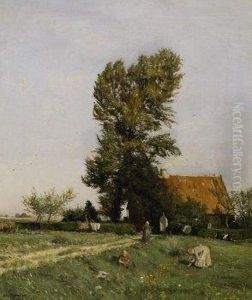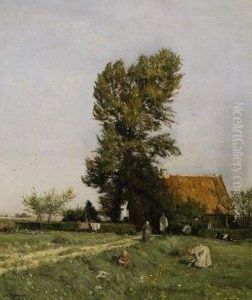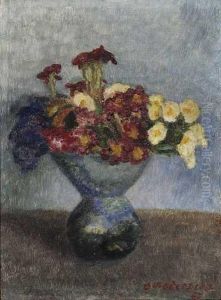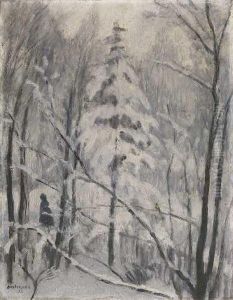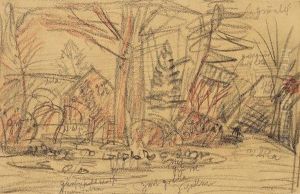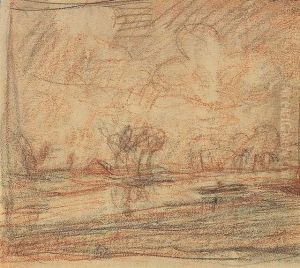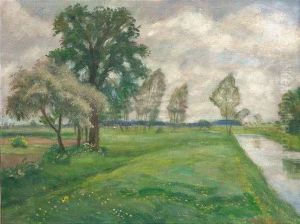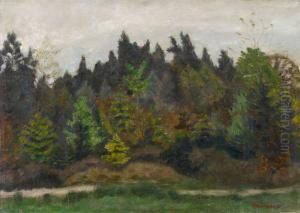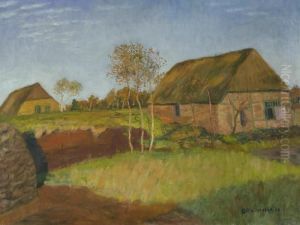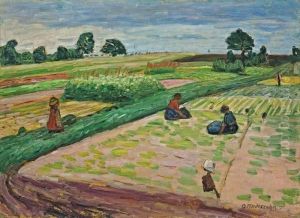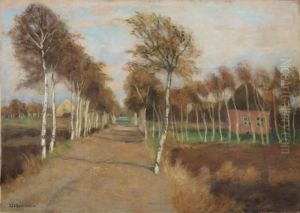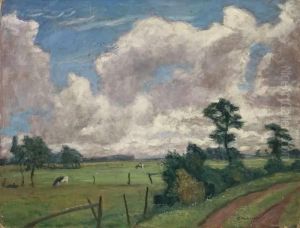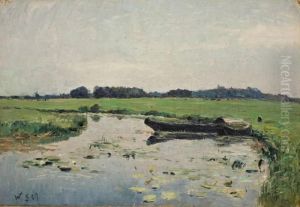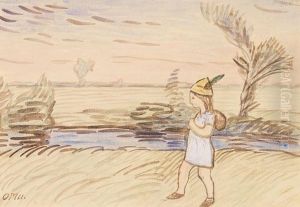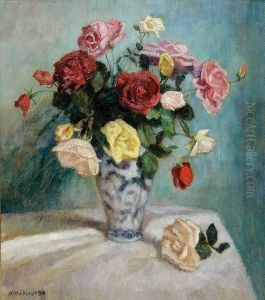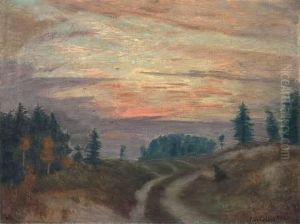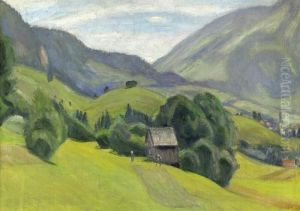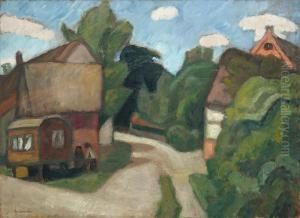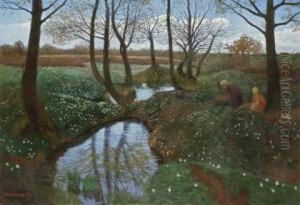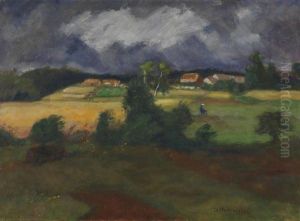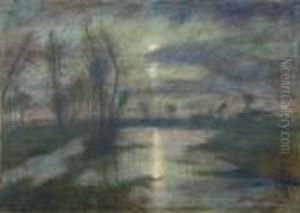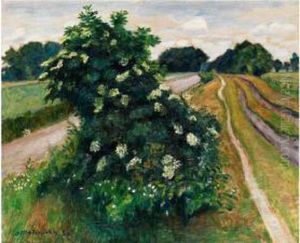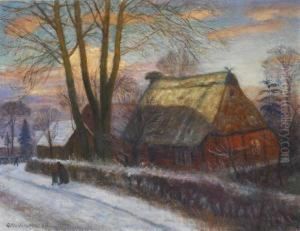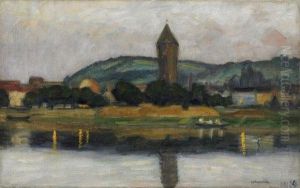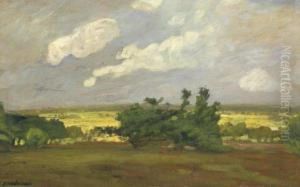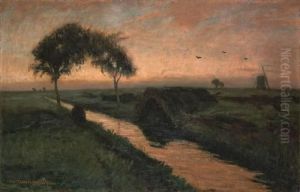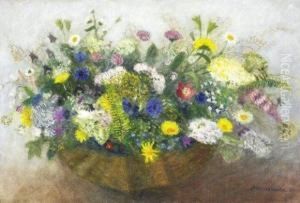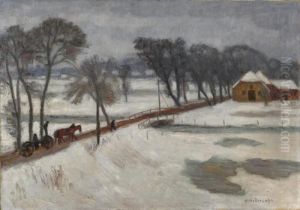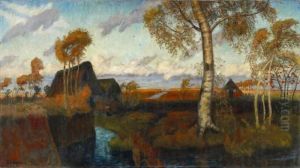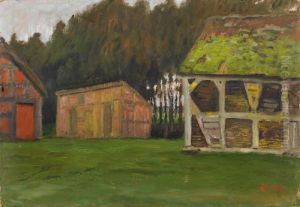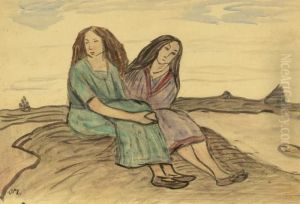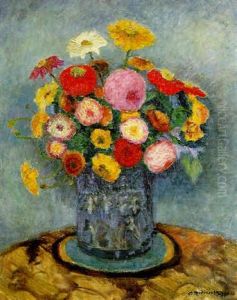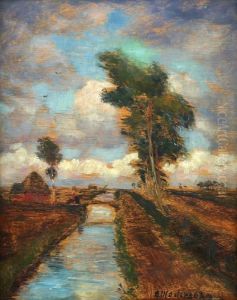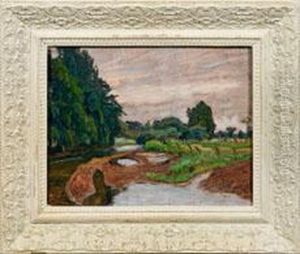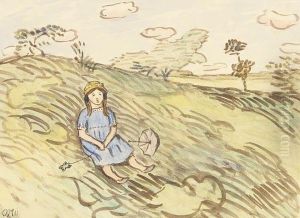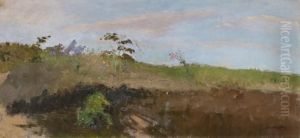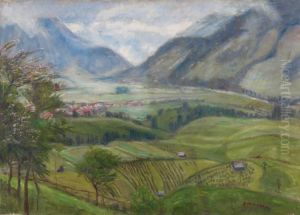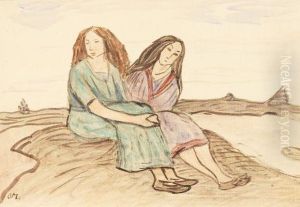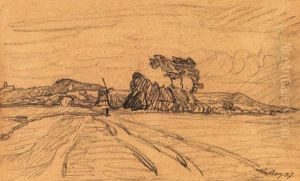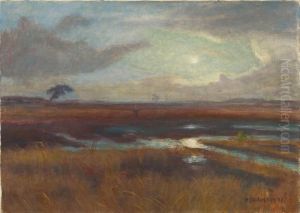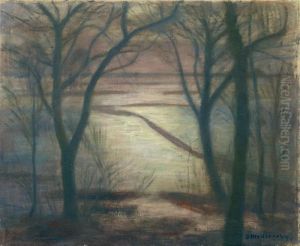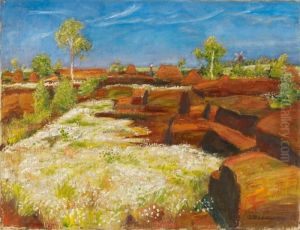Otto Modersohn Paintings
Otto Modersohn was a German painter and one of the founders of the Worpswede artists' colony. Born on February 22, 1865, in Soest, Westphalia, he studied at the Düsseldorf Academy of Arts where he was influenced by the naturalist approach to painting. In 1889, Modersohn moved to the small village of Worpswede, located in the Lower Saxony region of Germany, which was known for its unique landscape and lighting. There, he joined forces with other artists such as Fritz Mackensen and Hans am Ende to establish the Worpswede artist colony, which became a center for artists seeking to escape the urban environment and paint in direct contact with nature.
Modersohn's work is characterized by his love of the landscape, capturing the moody atmosphere of the marshes, heath, and forests of the region. His paintings often feature thick impastos and a rich palette, emphasizing the lushness and vitality of the natural world. Modersohn married several times, most notably to the sculptor Clara Westhoff in 1901 and after her death to the artist Paula Becker, who was also a key figure in the Worpswede community. His marriage to Becker was brief as she died in 1907, but it was a significant period of emotional and artistic exchange for both artists.
Throughout his life, Modersohn remained dedicated to the Worpswede community, although he did travel and work in other regions, particularly seeking inspiration in the landscapes of northern Germany. He continued to exhibit his work and participate in artistic circles, maintaining a moderate level of success and recognition during his lifetime. The outbreak of World War II and the changing art scene of the early 20th century saw a decline in the popularity of the naturalist and impressionist styles that Modersohn and his colleagues favored.
Otto Modersohn passed away on March 10, 1943, in Rotenburg, Germany. Today, his work is preserved in numerous German museums and collections. The Otto Modersohn Museum in Fischerhude is dedicated to his life and art, showcasing his contributions to the German art world and his role in the development of the Worpswede artist colony. Despite the shifts in artistic trends over the years, Modersohn's work continues to be appreciated for its heartfelt depiction of the German landscape and its reflection of the artist's profound connection to nature.
